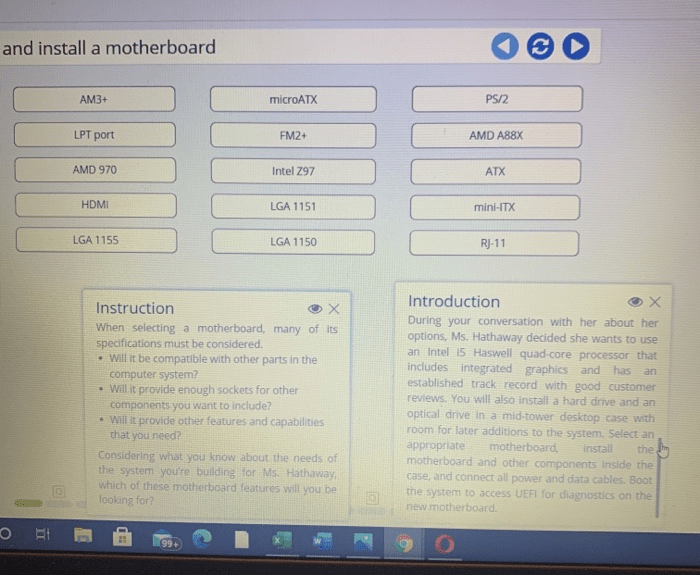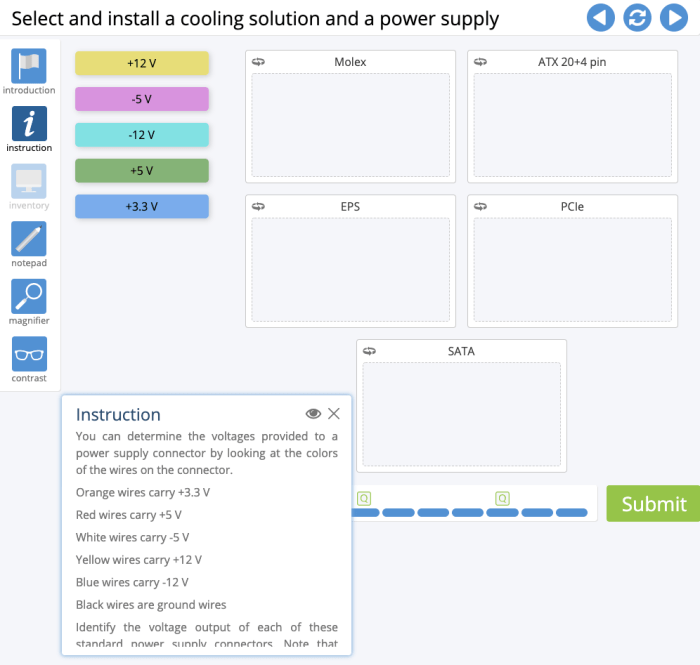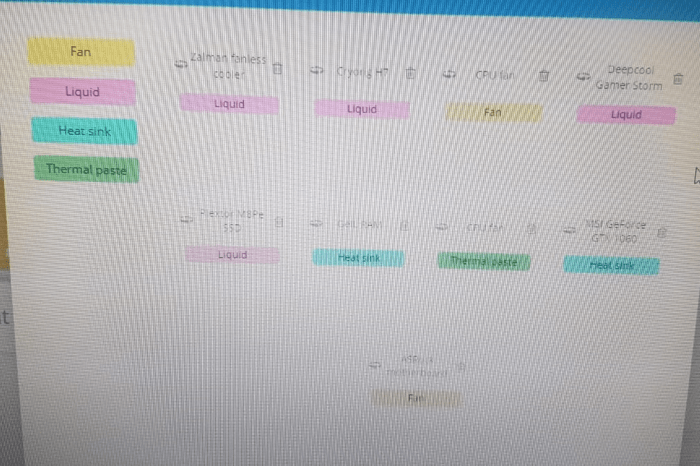Advanced hardware lab 2-5 select and install a motherboard – Advanced Hardware Lab 2-5: Selecting and Installing a Motherboard provides a comprehensive guide to the crucial process of choosing and integrating a motherboard into an advanced hardware laboratory setup. This guide offers invaluable insights into the key factors to consider when selecting a motherboard, ensuring compatibility with other system components, and troubleshooting common issues.
With a focus on the unique requirements of advanced hardware labs, this guide delves into the intricacies of motherboard selection, installation, and troubleshooting. It provides detailed instructions and best practices to ensure a successful and efficient motherboard integration process.
Motherboard Selection Criteria

When selecting a motherboard for an advanced hardware lab, several key factors must be considered:
- Socket Type:Determines the compatibility with the processor (CPU).
- Chipset:Influences the overall performance, including support for memory, storage, and expansion.
- Form Factor:Specifies the physical size and layout of the motherboard, ensuring compatibility with the computer case.
- Expansion Slots:Allows for the addition of expansion cards, such as graphics cards, sound cards, and network adapters.
- Memory Support:Specifies the type, capacity, and speed of memory modules that can be installed.
- Storage Support:Determines the number and types of storage devices that can be connected, including hard drives, solid-state drives, and optical drives.
- Networking Features:Provides integrated network connectivity, including Ethernet and Wi-Fi.
- Overclocking Capabilities:Allows for adjusting processor and memory settings to enhance performance.
- BIOS Features:Provides a user interface for configuring and monitoring system settings.
Motherboard Installation Process

Installing a motherboard requires careful handling and precise steps:
- Prepare the Case:Install the standoffs in the computer case to align with the motherboard mounting holes.
- Handle the Motherboard:Hold the motherboard by its edges to avoid damaging the components.
- Align and Mount the Motherboard:Place the motherboard on the standoffs and align it with the mounting holes. Secure it with screws.
- Install the Processor:Open the CPU socket lever, align the processor, and close the lever to secure it.
- Install Memory Modules:Open the memory module clips, align the modules with the slots, and press down until they click into place.
- Connect Storage Devices:Connect hard drives or solid-state drives to the motherboard using SATA cables.
- Install Expansion Cards:Insert expansion cards into the appropriate slots and secure them.
- Connect Power and I/O Cables:Connect the power supply cables to the motherboard and install the I/O shield on the back panel.
Compatibility Considerations

Ensuring compatibility between the motherboard and other system components is crucial:
- Processor Compatibility:The motherboard socket must match the processor type and generation.
- Memory Compatibility:The motherboard must support the type, capacity, and speed of the memory modules.
- Storage Compatibility:The motherboard must have sufficient storage connectors and support the desired storage devices.
- Expansion Card Compatibility:The motherboard must have the necessary expansion slots to accommodate the desired cards.
- Power Supply Compatibility:The power supply must provide sufficient wattage and connectors to power the motherboard and its components.
Verifying compatibility involves checking the manufacturer’s specifications and documentation for both the motherboard and the components.
Troubleshooting Common Motherboard Issues: Advanced Hardware Lab 2-5 Select And Install A Motherboard

Various issues can arise during motherboard installation or operation:
- No Power:Check power supply connections, reseat the motherboard, and clear CMOS.
- No Display:Verify monitor connections, reseat the graphics card, and update the BIOS.
- Memory Errors:Reseat memory modules, test each module individually, and update the BIOS.
- Storage Issues:Check storage device connections, ensure proper formatting, and run diagnostics.
- Overheating:Check for proper cooling, ensure sufficient airflow, and consider additional cooling solutions.
Advanced Motherboard Features
Some motherboards offer advanced features that enhance system performance and functionality:
- Multiple CPU Sockets:Allows for multi-processor configurations.
- High-Speed Memory Support:Supports memory speeds beyond standard specifications.
- Advanced Overclocking Capabilities:Provides granular control over processor and memory settings.
- Integrated Wi-Fi and Bluetooth:Eliminates the need for separate network adapters.
- RGB Lighting Control:Allows for customization of system aesthetics.
- RAID Support:Provides data redundancy and performance improvements.
Question Bank
What are the key factors to consider when selecting a motherboard for an advanced hardware lab?
Key factors include processor compatibility, memory capacity and speed, expansion slots, and onboard features such as network connectivity and storage interfaces.
How do I ensure compatibility between the motherboard and other system components?
Check the manufacturer’s specifications for compatibility information, use online compatibility checkers, and consult with technical support if necessary.
What are some common motherboard issues and how can I troubleshoot them?
Common issues include boot failures, display problems, and component malfunctions. Troubleshooting involves checking connections, updating BIOS, and performing hardware diagnostics.